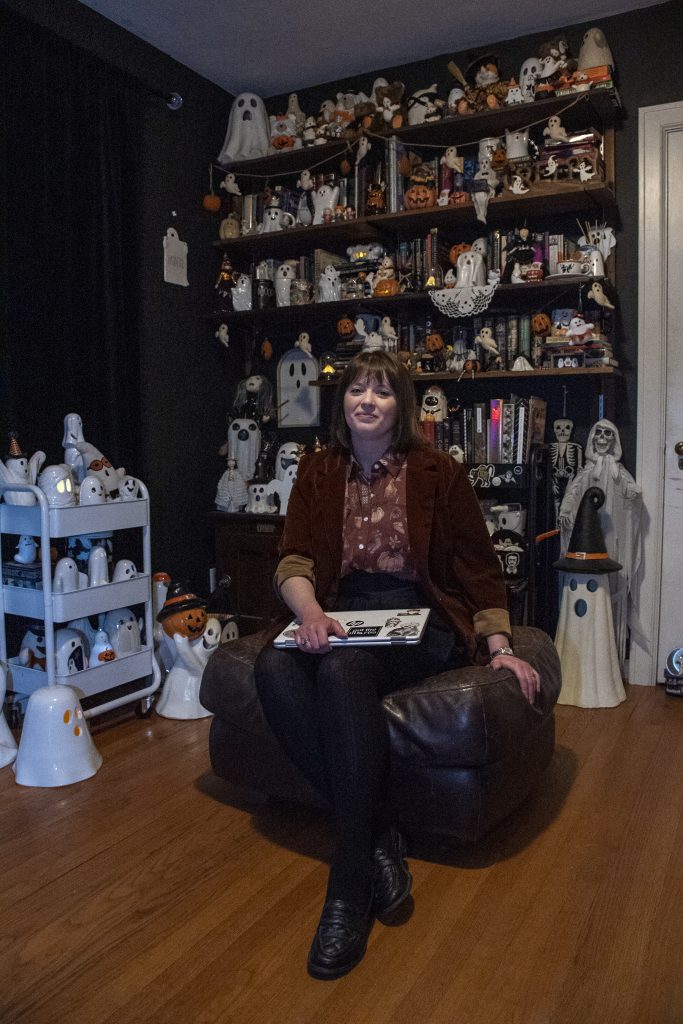BY KAT BRAZ
PHOTOS PROVIDED
The communities within Greater Lafayette boast an impressive collection of historic districts with tree-lined streets featuring diverse architecture. But behind those stately facades lie myriad ghostly legends and chilling accounts, each one a testament to the lingering spirits and unresolved mysteries that have left an indelible mark upon the cities and towns where strange things are said to occur.
James Moon’s Guillotine
One of the ghastliest tales in Lafayette lore is the unusual, tragic death of James Moon in 1876. After acquiring supplies at the hardware store, the farmer, blacksmith, self-proclaimed inventor and Civil War veteran committed suicide in Room 41 on the third floor of the Lahr House, which overlooked the marketplace on Fifth Street. A maid discovered Moon’s corpse the day after he checked in to the hotel. His body was strapped to the wooden floor, his head cleanly severed by the blood-splattered broadax bolted to a six-foot-long wooden arm that served as a crude guillotine activated by a candle burning through a cord. Today, the former Lahr House still stands and has been converted into an apartment building and retail spaces. Some say Moon’s ghost still haunts the third floor hallways.
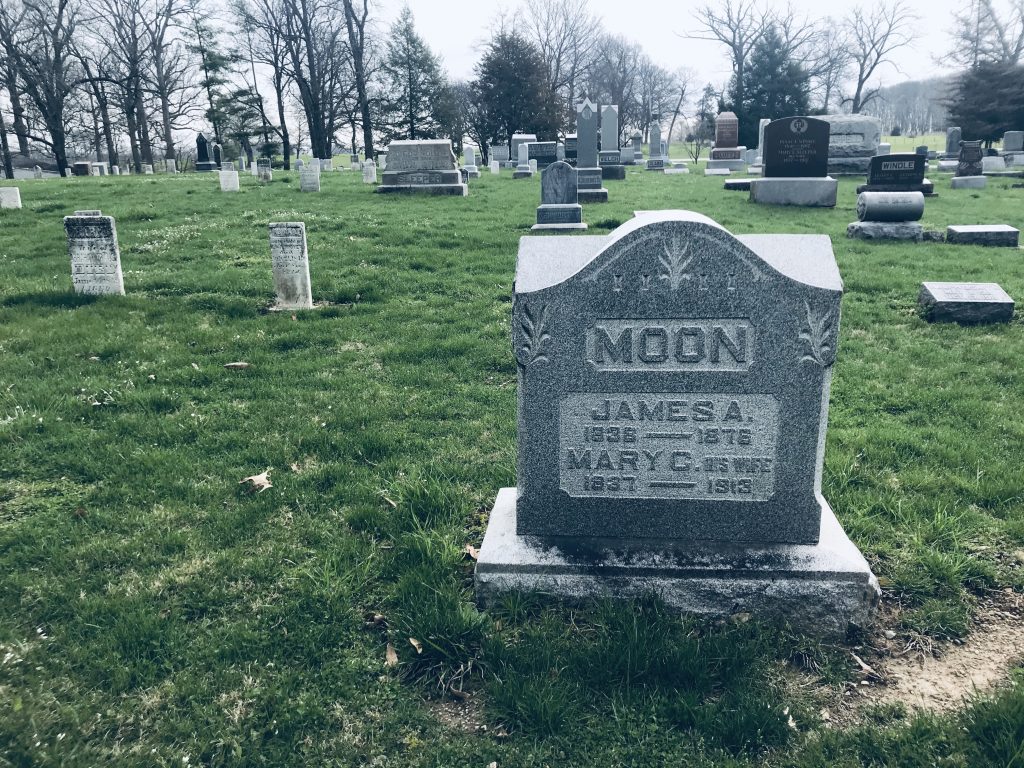
Greenbush Cemetery
Considered one of Lafayette’s most haunted locations, Greenbush Cemetery holds many of the city’s most notable figures, including founder William Digby. The city’s original cemetery was a burial ground located on the site of St. Boniface Church on Ninth Street. Many of the people buried there were moved and interred at Greenbush when it was established in the 1840s. There also are graves for around 30 Confederate prisoners of war and Union soldiers who died in a train collision near Lafayette on Halloween in 1864. The carnage was so gruesome half the men could not be identified. Neighborhood residents report eerie sightings such as ghostly apparitions walking through the cemetery at night.
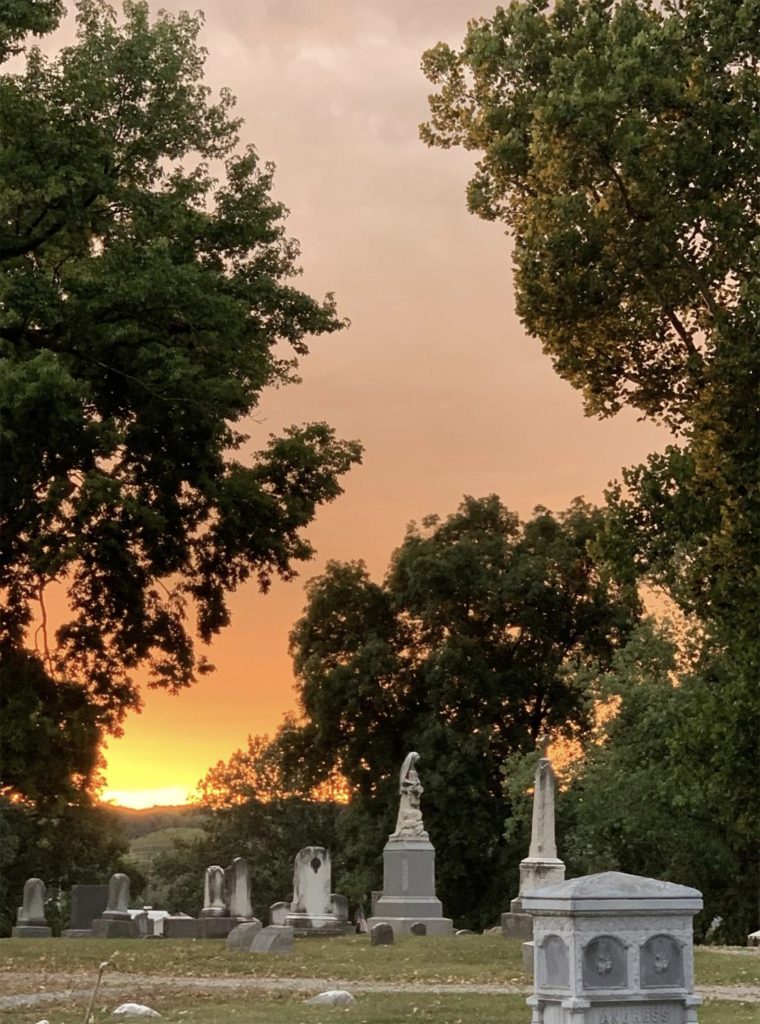
Purdue Airport’s Hangar One
Amelia Earhart, the most famous aviatrix in history, prepared for her final flight in Hangar One at the Purdue University Airport where some believe her spirit still lingers. Earhart and her navigator, Fred Noonan, vanished near Howland Island in the Pacific Ocean during an attempt to circumnavigate the globe.

Earhart purchased her “flying laboratory,” a Lockheed 10-E Electra, with funds from the Purdue Research Foundation and prepped for her flight in Hangar One. Airport crew members report sightings of a slender woman with short hair who is wearing pants, an aviation jacket and a scarf around her neck standing in the shadows of Hangar One. A member of the National Guard was so startled by the apparition that he fired shots at her as he watched her melt into the air. It’s not just the airport that Earhart reportedly haunts; she’s also been spotted in Duhme Hall where she lived during her brief tenure on Purdue’s faculty. Over the years, student residents have heard the clacking of an old-fashioned typewriter late into the night, allegedly the time when Earhart was most fond of doing her writing.
Top Notch Bar
Located on Third Street in Brookston, Top Notch Bar is known for serving up great food and spirits. Originally the A.B. Garrot Drygoods and Notions store in 1902, it later became the Myers Hotel in 1914. A young girl and guest of the hotel died there of Spanish flu in 1918. But the ghostly footsteps that can sometimes be heard on the stairs are usually attributed to another death. Lawrence “Bunk” Switzer was fatally stabbed by his former lover, Kathryn Newkirk, on June 5, 1965, in the apartment over the bar where the couple lived. Staff at the Top Notch suspect Bunk’s ghost is responsible when TVs go on the fritz, ice scoops go missing, items unexpectedly fall off the bar and the jukebox starts playing ’50s and ’60s tracks. In a gesture of goodwill, Top Notch employees often call out “hello” to Bunk whenever they go upstairs.
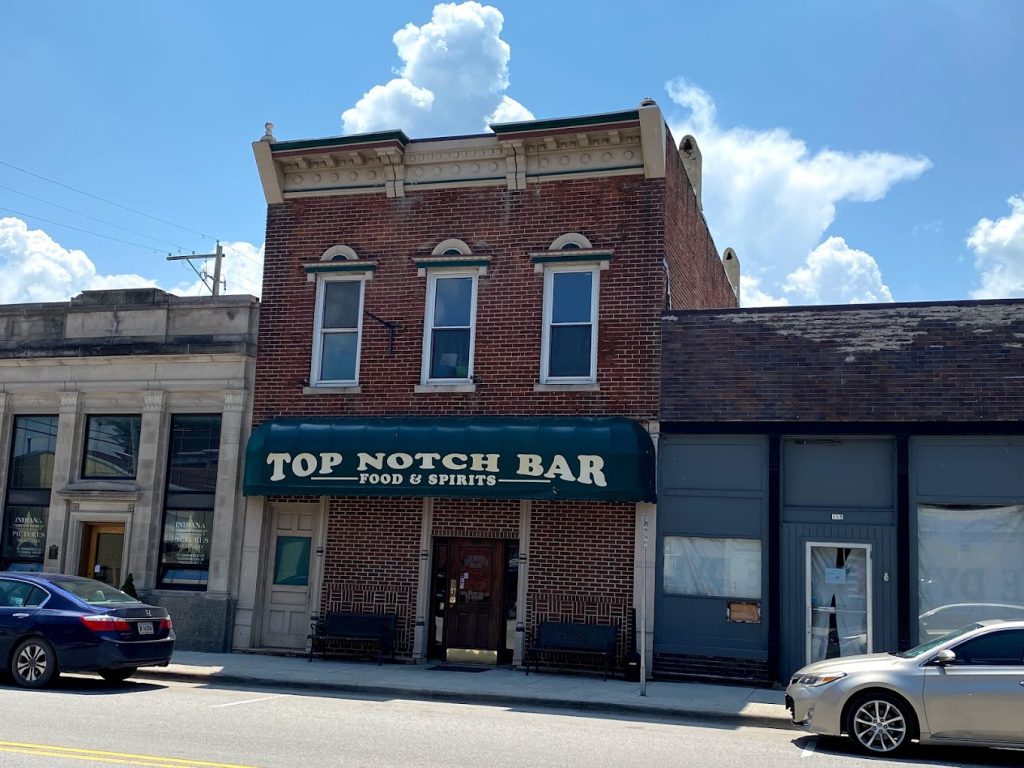
Adams Mill
Built in 1846, Adams Mill, on Wildcat Creek near Cutler, operated as a grist mill until 1951 when it was converted into a local attraction demonstrating the grinding of grain and exhibiting artifacts of the early rural Midwest. The site is now owned and operated by the nonprofit Adams Mill Inc. Several spooky occurrences have been reported at the mill, including footsteps on the stairs when nobody’s there and a woman in a blue dress standing in front of the third-floor window who vanishes from sight. Visitors have reportedly experienced paranormal activity at the nearby Adams Mill Covered Bridge, too. Some claim they are physically held back and unable to cross it. ★
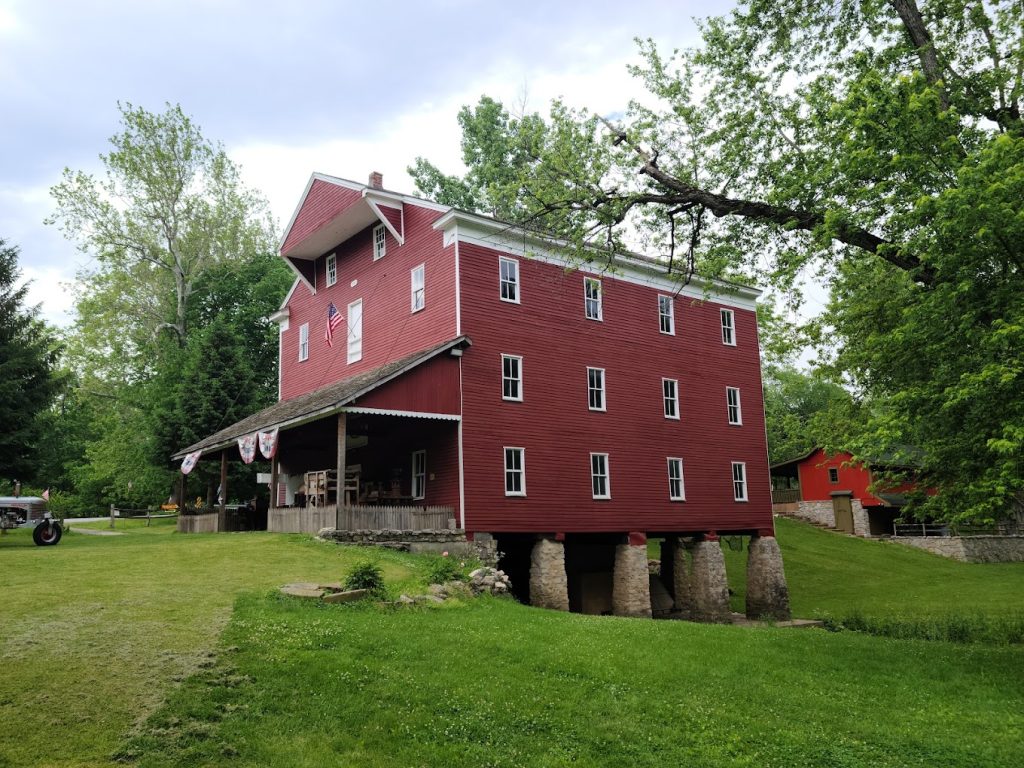
Notebook of Ghosts Q&A with Ashley Watson
Gripped by a fascination with ghost stories from a young age, Ashley Watson, a communications specialist at Purdue University who earned her Ph.D. in rhetoric, blogs about folklore, hauntings and commonplace books at notebookofghosts.com.
What first sparked your interest in ghosts?
I’ve always been intrigued by ghosts, and I started keeping notebooks with ghost research when I was younger. The Willard Public Library [in Evansville, Indiana] has ghost cams set up inside, and I remember spending hours watching them online (willardghost.com). I just really enjoy a good mystery.
How did the Notebook of Ghosts blog get started?
I started the blog in January 2016 after my grandmother, who shared a fondness for ghost stories, passed away. I reflected on how I wanted to spend my time and decided I wanted to consume everything I could about ghosts, whether in literature, science, folklore or personal experience. I remembered my childhood ghost research bringing me happiness, and I wanted to continue my grandmother’s ghost legacy.
What’s a commonplace book?
I didn’t learn what commonplace books were until I had to keep one for a college course. I wasn’t aware of the tradition of using a blank notebook for storing and organizing information for later use, but I realized I had been keeping one since I was a kid, compiling all this internet research on ghosts. My physical commonplace book is mixed media and contains a table of contents and glossary. I carry it around everywhere because you never know when a ghost story will be told or a ghost story will appear.
Where do you do your writing?
I’ve always kept ghost figurines on my desk. Once we purchased our house, I was able to have a dedicated ghost room which I’ve decorated with ghostly figurines and artwork. When I enter that room, I get nostalgic about my childhood and Halloween and it helps get me in the zone when I’m trying to start research on a new spooky topic. I also have a file system that holds all my research and a collection of vintage ghost books.
What’s a favorite book in your collection?
A southern folklorist named Kathryn Tucker Windham wrote 13 Alabama Ghosts and Jeffrey in 1969. It was the first in a series of books that each focused on a different state. Jeffrey is the name of the ghost who haunted her home and inspired her to research local legends. I also own some cassette tapes of Windham telling ghost stories — they’re some of my prized possessions.
What do you love about ghost stories?
Ghost stories are an interesting way to look at society and culture because these stories really speak to a community’s beliefs and fears. When I’m researching a ghost story, I try to approach it with that lens
of understanding. How did these stories start? What happened to spark this fear? Ghost stories are a way for people to make sense of something they don’t understand.
Have you ever seen a ghost?
One of my grandmother’s life goals was to see a ghost, and she died without having that experience so I’ve kind of picked up that baton. I view things through a critical lens, but that doesn’t stop me from seeking my own ghostly encounter by staying in haunted hotels when I travel or visiting haunted cemeteries.
So do you believe in ghosts?
I’m like Scully and Mulder. I want to believe, but I’m always going to look at it from a scientific perspective. I just don’t know enough to know the answer.
Do you have a favorite ghost story?
I have another website, It Was Not a Ghost (itwasnotaghost.com). While searching in the newspaper archives, I come across so many stories where the community thought it was a ghost but it turned out not to be a ghost. One of my favorites happened in 1902 when a group of boys in North Manchester, Indiana, strung wires across an abandoned cemetery and attached one of their mother’s robes. At night, the boys made all these spooky noises and used the wires to move the robe back and forth. They convinced some people in the community the cemetery was haunted until they were discovered. Childhood pranks are my favorite category of stories where it was not a ghost. ★
